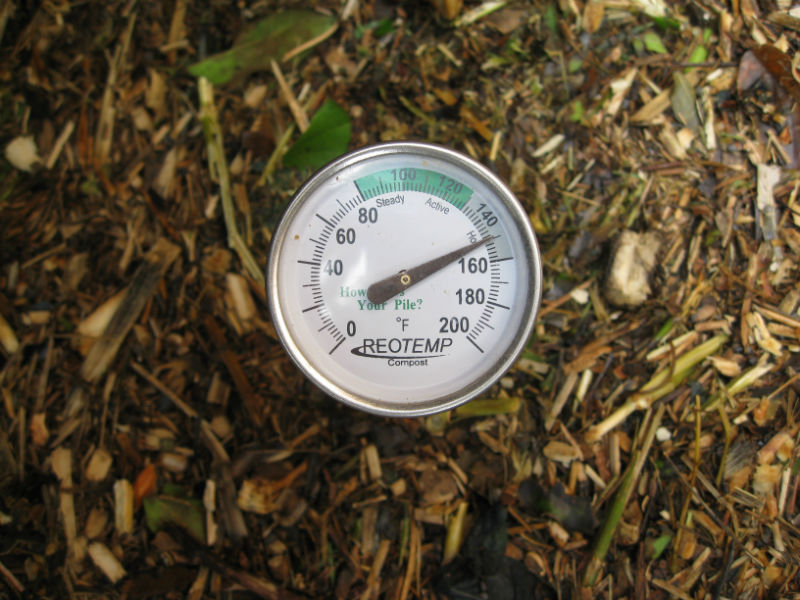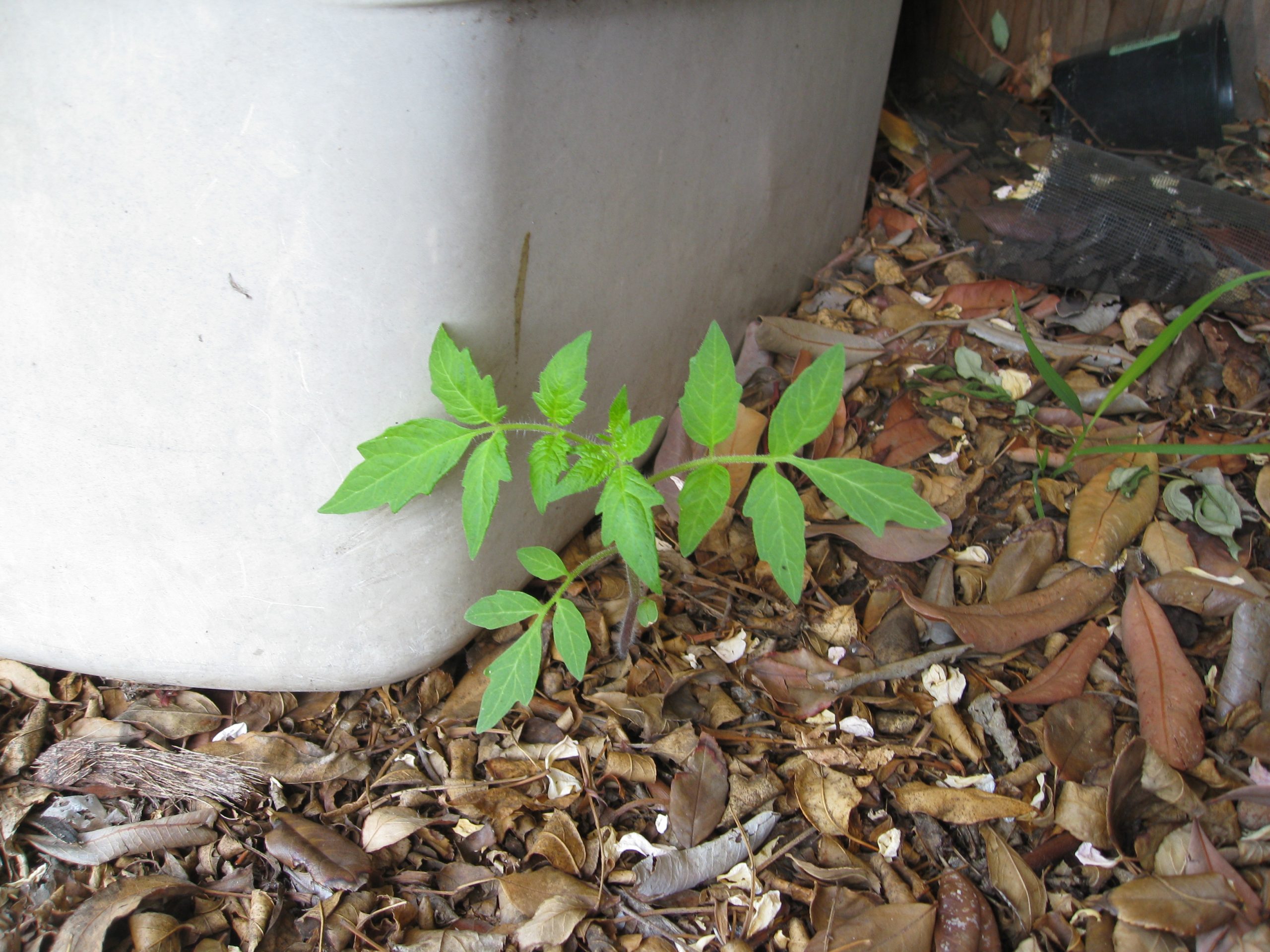A great set of questions came in from Debra this week to Ask Gardenerd. She asks: “I know you are a fan of ‘volunteers’. I have noticed 3 tomato plants sprouting among my string beans and zucchini. Should I leave them in [or] sacrifice them? This was my tomato bed last summer…Not sure where all these seeds came from. How do you kill seeds in your compost bin from fruit and veggie scraps? I can’t pick out a all the seeds (ie from a rotten strawberry or cucumber or an apple core). Any suggestions?” — Debra Carnow
Debra, these are common issues in both your bed soil and home made compost. Sometimes we want those compost volunteers, sometimes we don’t. Let’s tackle your first question first.
Volunteer tomatoes – Keep or Pull?

For me, volunteer tomatoes are always awesome, but their location may not be ideal. You can transplant them to a different spot if you catch them young enough. Every garden needs a little mystery, so why not keep them? Well, one reason not to keep them is if you spot signs of disease early on. If your volunteers look stunted, weak, or spotted with fungal diseases like Septoria leaf spot, powdery mildew, or any kind of blight, you would be better off tossing them in the green bin for the city to compost.
Your green beans and zucchini won’t pose a threat to the tomatoes if you decide you have enough room for all of them. But (another reason not to keep them) it may screw up your crop rotation plans next year, so keep that in mind if you want to keep tomato diseases in check.
How to Kill Seeds In Your Compost?

Most gardenerds are making home compost using the cold-compost method. We pile up layers of browns and greens over time, turn them every once in awhile, and wait for stuff to break down. This method does not kill weed seeds, nor diseases. But if you construct an Active Batch Thermal Compost pile, temperatures get hot enough to kill both weeds/seeds and diseases. Temperatures above 130° F will kill off any potential volunteers. Adding fresh grass clipping, animal manures (not dog or cat), alfalfa, or other high-nitrogen ingredients all at once (to comprise 20% of total biomass) will kick up the temperatures to achieve up to 160° F.
To keep the temps high for at least a week or so, you must turn the pile when it peaks. Use a compost thermometer to check each day and pull out your digging fork as soon as temperatures drop. By turning the pile again, you will expose new surface area to bacteria and fungi and they will go to work breaking down the material again, thus bumping up the heat in your compost. It’s a little more involved, but you’ll have clean compost by the end. Want to read more? Try this site for a summary.
If that’s not an option, sift your compost before applying it to your garden beds. Some seeds will get through, but the situation will be more manageable.
Also, cover your beds with mulch to prevent unwanted seeds from germinating once your plants are established. With a combination of those three techniques, you’ll have fewer volunteers and more of what you planned.
Thanks for writing in about compost volunteers, Debra. We hope this helps.


